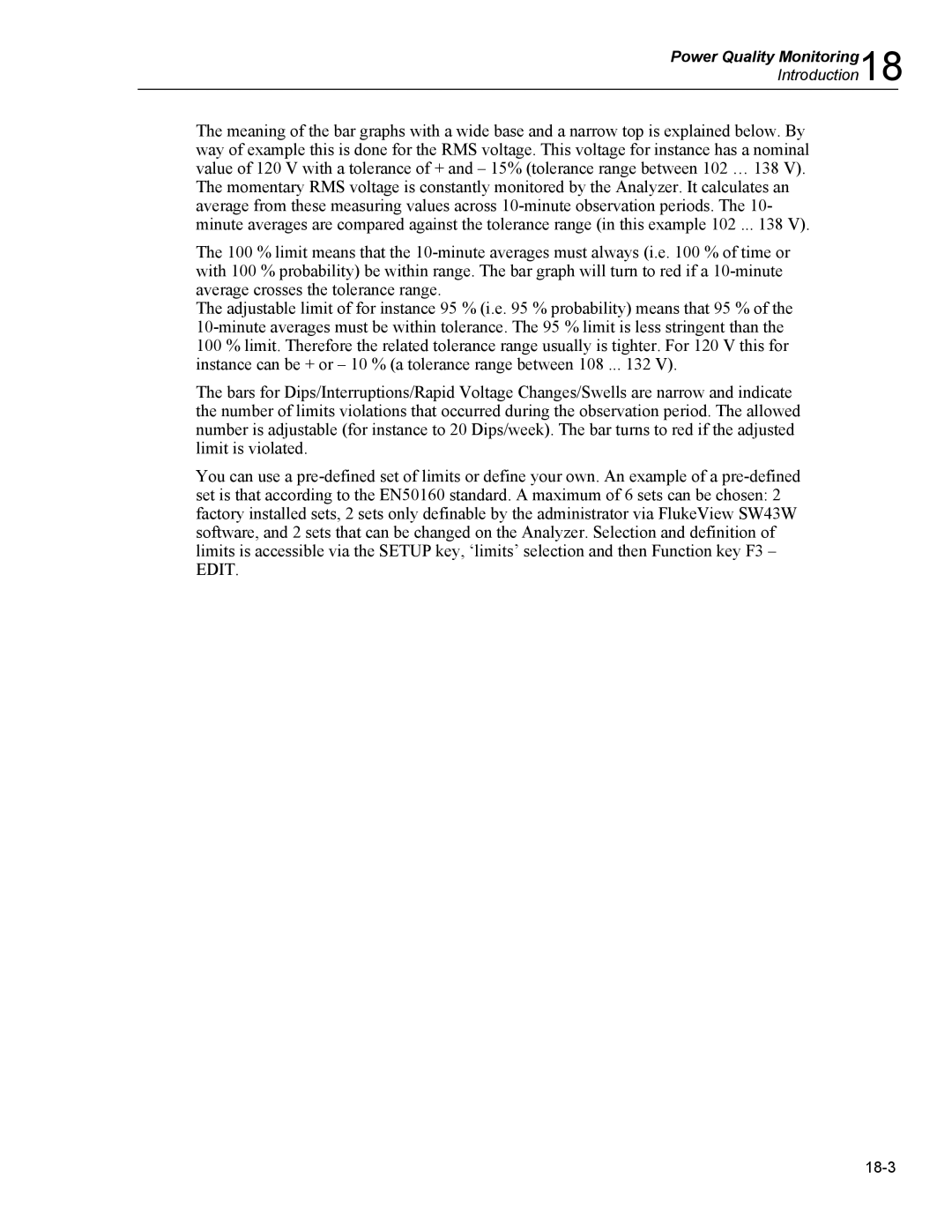Power Quality Monitoring18
Introduction
The meaning of the bar graphs with a wide base and a narrow top is explained below. By way of example this is done for the RMS voltage. This voltage for instance has a nominal value of 120 V with a tolerance of + and – 15% (tolerance range between 102 … 138 V). The momentary RMS voltage is constantly monitored by the Analyzer. It calculates an average from these measuring values across
The 100 % limit means that the
The adjustable limit of for instance 95 % (i.e. 95 % probability) means that 95 % of the
100 % limit. Therefore the related tolerance range usually is tighter. For 120 V this for instance can be + or – 10 % (a tolerance range between 108 ... 132 V).
The bars for Dips/Interruptions/Rapid Voltage Changes/Swells are narrow and indicate the number of limits violations that occurred during the observation period. The allowed number is adjustable (for instance to 20 Dips/week). The bar turns to red if the adjusted limit is violated.
You can use a
